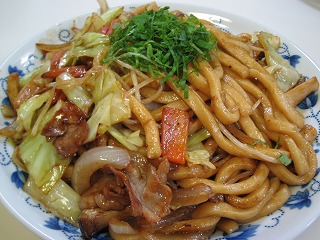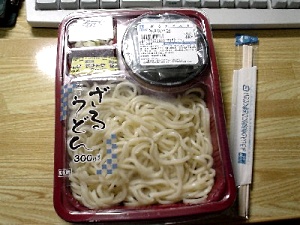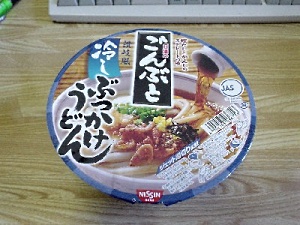Japanese Udon
Japanese udon is a very popular noodle dish in Japan. Healthy, versatile, and inexpensive, udon can be served in a variety of ways hot or cold, and is a staple of the Japanese diet.
![]()
Overview of Japanese Udon
Udon noodles are white-colored noodles, about as long as and thicker than Italian spaghetti, made from wheat flour. In Japan, udon is enjoyed both as a hot soup dish, and cold, most commonly in the form of plain cold noodles dipped in a chilled soy-based broth.

Udon is commonly served at home, in sit-down restaurants, as a bento purchased at Japanese convenience stores, and as a quick, cheap meal at little single-counter shops in or near train stations, where customers stand and down a quick serving before heading on their way.
![]()
Varieties of Japanese Udon Dishes
Udon and soba noodles are often used interchangeably in Japan, so the variety of ways in which they are served is virtually identical. Many noodle shops in Japan offer the following dishes and ask diners to choose between soba or udon noodles.
Hot Udon Dishes
The most basic hot udon dish is a bowl of udon prepared in a hot bowl of soy- based broth called tsuyu. There are many variations of this basic hot udon dish. These include:
Kake udon: basic hot udon topped with diced scallions.

Tanuki udon: hot udon topped with bits of fried tempura batter called tenkasu.

Kitsune udon: hot udon topped with a thin slice of deep-fried tofu called abura-age.

Kaki-age udon: hot udon topped with a ball of tempura usually containing fish and assorted veggies.

Tempura udon: hot udon usually topped with a couple big pieces of shrimp tempura.

Tororo udon: hot udon topped with a grated Japanese yam into a somewhat slimy texture similar to natto. As such, it’s an acquired taste that is definitely not for everyone.

Other Hot Udon Dishes
Curry Udon: udon noodles in a stew-like Japanese curry.

Yaki-udon: similar to yakisoba, soy-flavored stir-fried udon noodles with cabbage, carrots, and meat.

Nabeyaki udon: a winter favorite consisting of udon noodles cooked in a dashi-based broth filled with ingredients like leeks, spinach, and seafood.

Cold Udon Dishes
The most basic cold udon dish is called zaru udon. This dish consists of a plate or flat bamboo basket of cold noodles, often topped with dried nori (seaweed). The noodles come with a container of cold tsuyu for dipping, and wasabi and scallions for mixing into the tsuyu.
In order to eat zaru udon, first mix the wasabi and scallions into the tsuyu to taste, then scoop up a couple bite-sized portions of noodles and dunk them in the tsuyu. Let them sit for a few seconds and then eat the noodles from the tsuyu container. Repeat and enjoy!
There are also several other varieties of cold udon dishes. These include:
Ten-zaru udon: this is zaru udon with a side of tempura, usually a mixture of shrimp and veggies. Dunk the tempura pieces into the tsuyu along with the udon noodles.

Tororo udon: A cold version of the slimy grated Japanese yam described above.
Oroshi udon:cold udon noodles in a shallow cold tsuyu broth with grated daikon radish.
![]()
Where to Eat Udon in Japan
Udon is so common in Japan that you can find shops and restaurants serving it just about anywhere. There are udon shops everywhere in major cities like Tokyo, and udon restaurants are common in rural tourist spots as well.
It’s fun to experience eating cheap udon at a tachi-gui udon shop at a train station (where soba noodles are also commonly served), and this is a particularly great option if you’re on a budget. However, all udon is not created equal, and the best-tasting Japanese udon is usually found where the noodles are made fresh on site (udon noodles made on site are called “te-uchi udon.”).

Udon can be enjoyed as a popular bento meal available at any Japanese convenience store.

Instant udon can be purchased at Japanese convenience and grocery stores. Just add hot water and serve:

Udon noodles are of course also available in dry or even frozen form for easy home preparation.

Japanese udon is a delicious and readily available staple food, making it an obvious food choice for any noodle loving visitor to Japan.
![]()
